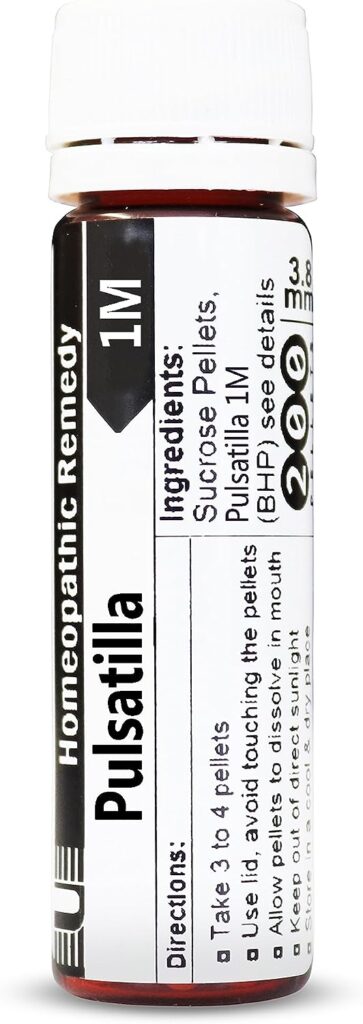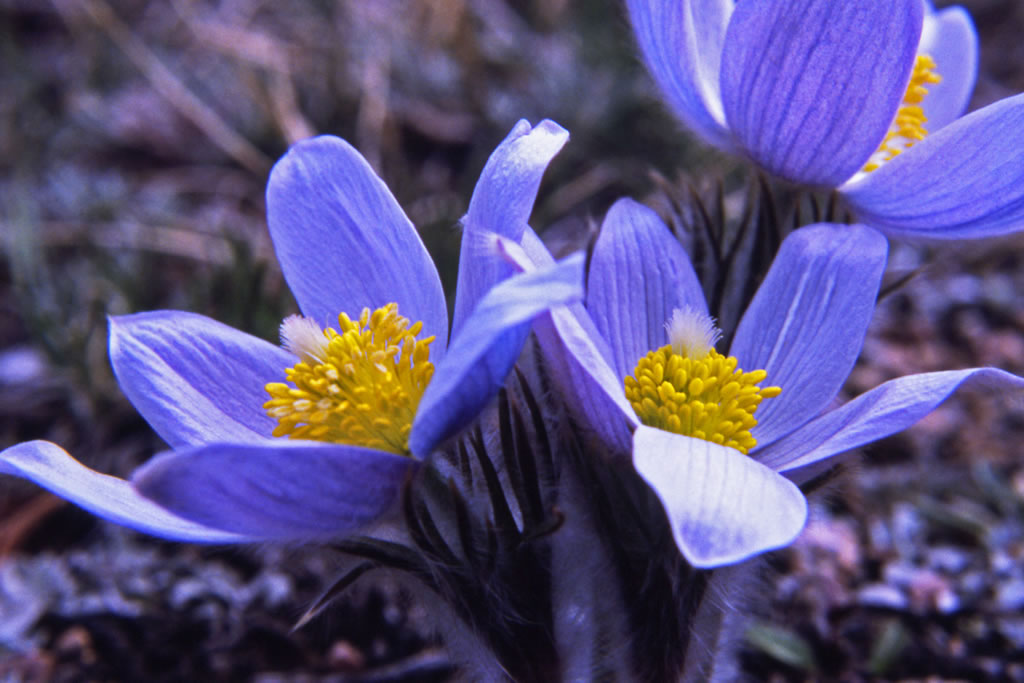Pulsatilla Pratensis, often referred to as Pulsatilla or Small Pasque Flower, is a homeopathic remedy primarily indicated for individuals who exhibit a gentle, yielding, and sensitive temperament. These individuals tend to be emotionally malleable and may display timidity. While they are sympathetic to the needs of others, they themselves seek attention, sympathy, or consolation when distressed. Failure to receive this emotional support can lead to irritability, jealousy, or feelings of isolation.

Emotional Profile:
Emotionally, Pulsatilla subjects seek sympathy and attention, often weeping easily. Their sympathetic and nurturing nature towards others juxtaposes with their yearning for consolation and affection. A striking characteristic arises when these emotional needs go unmet, potentially leading to irritability, jealousy, or feelings of profound solitude.
Physiological Symptoms:
Joint and rheumatic pains that tend to wander throughout the body fit the profile for treatment with Pulsatilla. The remedy is linked to discharges characterized by thickness, blandness, and shades of yellow or green. These multifaceted symptoms find aggravation in warm or stuffy environments and experience relief in the open air.
Respiratory and Allergic Manifestations:
In the context of respiratory complaints, Pulsatilla responds to individuals experiencing blocked noses and sneezing, particularly in congested indoor spaces. The distinctive nasal catarrh is characterized by profuse, watery discharge, while loss of smell and taste may accompany these symptoms. Notably, burning and itching of the eyelids are also observed.

Cough Profile:
Pulsatilla also plays a role in addressing cough presentations. A dry nocturnal cough transitions into a looser pattern in the morning. Especially significant is the tendency for a nighttime cough that disrupts or prevents sleep.
Hay Fever and Ocular Symptoms:
The remedy’s influence extends to hay fever sufferers, with the hallmark burning and itching of the eyelids being prominent. This ocular involvement adds to the remedy’s profile, addressing allergic manifestations and sensitivities.
Eye Symptoms:
Similarly, Pulsatilla finds a notable application in addressing eye problems, particularly conjunctivitis, where thick, yellow or green discharges are common. Patients may experience burning or itching sensations in the eyelids, which are relieved by cold bathing. Another ocular manifestation treated by this remedy is the formation of styes, with a preference for upper eyelids.
Headaches:
The Pulsatilla remedy is efficacious for headaches triggered by sun exposure, confined spaces, or consumption of rich foods. The headaches worsen with movement but improve when the individual is exposed to fresh air. Additionally, Pulsatilla proves valuable in addressing headaches or migraines occurring at the conclusion of the menstrual period.
Gastrointestinal Health:
Pulsatilla demonstrates its relevance in gastrointestinal health by effectively addressing nausea and indigestion induced by the consumption of rich and fatty foods. This is particularly significant given the characteristic affinity of individuals needing Pulsatilla for such foods.
Menstration & Labor:
Furthermore, Pulsatilla is notably suited for various menstrual and labor-related issues. It is associated with suppressed or delayed menses, which can be influenced by exposure to wet conditions. Irregular and painful menstrual periods, particularly during puberty, are also within the therapeutic purview of this remedy. Additionally, Pulsatilla is recognized for its ability to address labor pains that are ineffectual and subject to change.

Treatment for Animals:
For pets, Pulsatilla captures the essence of certain behavioral traits, such as excessive attention-seeking tendencies combined with shyness toward strangers. These animals often exhibit a preference for cool, well-ventilated spaces. In terms of physical symptoms, pets requiring Pulsatilla may display green and bland discharges from the eyes or nose, often occurring unilaterally. This remedy is also indicated in cases of false pregnancy or when pets seek companionship and attention during the labor process.
In summary, Pulsatilla Pratensis emerges as a dynamic remedy encapsulating both emotional and physical dimensions. Its responsiveness to changeable symptoms, yearnings for attention, and distinctive physiological profiles in various conditions underscore its relevance in the homeopathic therapeutic landscape.
